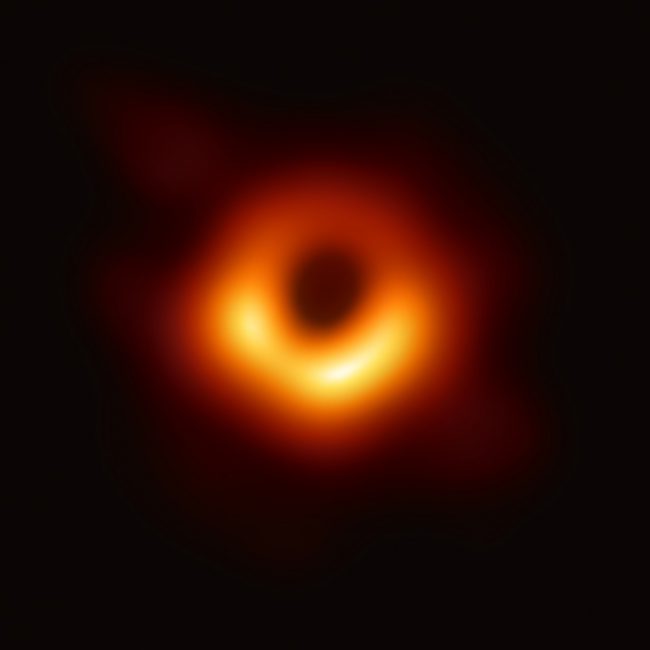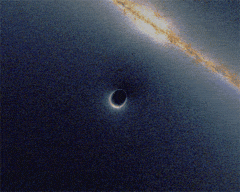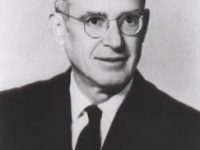
Direct image of a supermassive black hole at the core of Messier 87
Probably on December 25, 1724, English natural philosopher and geologist John Michell was born. He is best known as both a theorist and an experimenter, who was the first to propose the effects of gravity on light, later resulting in the physics of general relativity and black holes.
John Michell – Background
John Michell was born in Eakring, Nottinghamshire, UK, the son of Gilbert Michell, a priest, and Obedience Gerrard. However, his exact birth place and date remain unknown. He earned his Master’s degree from Queen’s College of Cambridge University around 1752 and probably in the early 1760s, he earned a B.D. He was Tutor of the college from 1751 to 1763; Praelector in Arithmetic in 1751; Censor in Theology in 1752; Praelector in Geometry in 1753; Praelector in Greek in 1755 and 1759; Senior Bursar in 1756; Praelector in Hebrew in 1759 and 1762; Censor in Philosophy and Examiner in 1760. From 1762 to 1764, he held the Woodwardian Chair of Geology till he was obliged to relinquish it on his marriage. He was appointed rector of St. Michael’s Church of Thornhill, near Leeds in 1767 and held this post for the rest of his life. [1,2] Michell did most of his important scientific work in Thornhill, where he died on 21 April 1793, aged 68.

Lensing by a black hole, Urbane Legend (optimised for web use by Alain r), CC BY-SA 3.0, via Wikimedia Commons
Artificial Magnets and Gravity
Michell began researching on artificial magnets already in the 1750s and he managed to demonstrate that the magnetic force exerted by each pole of a magnet decreases with the square of the distance. Thereupon, Michell published at Cambridge a work of some eighty pages entitled “A Treatise of Artificial Magnets“. Michell also designed an experimental device that was probably used later on by Cavendish to measure the force of gravity between the masses in the laboratory to receive the first accurate value for the gravitational constant ‘g‘.[5] In the field of astronomy, Michell demonstrated how stars were distributed in the sky and he argued that there were numerous pairs or groups of stars and the first evidence was provided for binary stars and clusters.
Research in Geology
Until the late 20th century Michell was considered important primarily because of his work on geology. His most important geological essay, written after the 1755 Lisbon earthquake, was entitled “Conjectures concerning the Cause and Observations upon the Phaenomena of Earthquakes” (1760). In this paper he introduced the idea that earthquakes spread out as waves through the Earth, and that they involve the offsets in geological strata now known as faults. He was able to estimate both the epicentre and the focus of the Lisbon earthquake, and may also have been the first to suggest that a tsunami is caused by a submarine earthquake.
Black Holes
Around 1783, Michell wrote a paper, intending to discover a method to determine the mass of a star. In it, Michell referred to Newton’s theory of light and reasoned that when light particles were emitted by a star, it’s gravitational pull reduced their speed and thus, an observable shift in the starlight was the result. Initially, Michell thought that he could measure how much the speed of light was reduced by passing it through a prism. He could conceivably compare the refracted images of different stars to determine the difference in their surface gravity, and from that, calculate their respective masses. Back then, Ole Rømer‘s measurements of the speed of light [4] were known and Michell also knew of the concept of ‘escape velocity‘. Michell asked himself, what would happen if stars were so incredibly massive and their gravity so strong that the escape velocity was equal to the speed of light. The conclusion was that these stars would probably be invisible to the astronomers and that there could be numerous stars like these that emitted no light and stay undetectable to scientists. On this day, most scientists believe that most galaxies have black holes in their center. [1] At one point, Michell attempted to measure the radiation pressure of light by focusing sunlight onto one side of a compass needle. The experiment was not a success: the needle melted.
Gravity Theory
As revolutionary as Michell’s thoughts were, he was wrong in his initial proposal to measure a star’s mass by the speed of light, because from Einstein’s relativity theory (1905) it is known that light moves through space at constant speed regardless of the local gravity strength.[7] The scientific research around black holes was probably rediscovered after Einstein published his theory of gravity. Karl Schwarzschild is known to have contributed significantly to the topic and solved Einstein’s equation for the case of a black hole.[6] He envisioned it as a spherical volume of warped space surrounding a concentrated mass and invisible to scientists on Earth. It was then suggested in the work of Robert Oppenheimer and his colleagues that an object like this may be formed by the collapse of a massive star. The physicist John Wheeler coined the term ‘Black Hole‘ in 1968. [3]
“Depiction” of a Black Hole
In 2016, the merger of two black holes was observed via the gravitational waves generated in the process by LIGO, and in 2019, a radio telescopic image of the supermassive black hole M87* at the center of the galaxy M87 was obtained with the Event Horizon Telescope. This was the final result of months of analysis using complex image processing algorithms and exclusion of spurious effects. M87 is 55 million light-years from Earth, and the black hole at its center has a mass that was estimated to be 6.6 billion solar masses before the EHT observation now available. For the first time, the accretion fluxes of heated matter around a black hole, distorted by gravitation, were imaged.
Jerome Gauntlet, Black Holes and the Fundamental Laws of Physics, [13]
References and Further Reading:
- [1] John Michell at the American Physical Society
- [2] Biography of John Michell in Our Place in the Universe
- [3] John Michell at the American Museum of Natural History
- [4] Ole Rømer and the Speed of Light, SciHi Blog
- [5] Henry Cavendish and the Weight of the Earth, SciHi Blog
- [6] Karl Schwarzschild and the Event Horizon, SciHi Blog
- [7] How Albert Einstein Revolutionized Physics, SciHi Blog
- [8] “This Month in Physics History: November 27, 1783: John Michell anticipates black holes”. APS Physics.
- [9] Geikie, Sir Archibald (1918). Memoir of John Michell, M.A., B.D., F.R.S., fellow of Queens’ college, Cambridge, 1749, Woodwardian professor of geology in the university 1762. Cambridge University Press.
- [10] Chisholm, Hugh, ed. (1911). “Michell, John“. Encyclopædia Britannica. 18 (11th ed.). Cambridge University Press. pp. 370–371.
- [11] Works by or about John Michell at Internet Archive
- [12] John Michell at Wikidata
- [13] Jerome Gauntlet, Black Holes and the Fundamental Laws of Physics, The Royal Institution @ youtube
- [14] Timeline of English Astronomers via DBpedia and Wikidata






Pingback: Whewell's Ghost